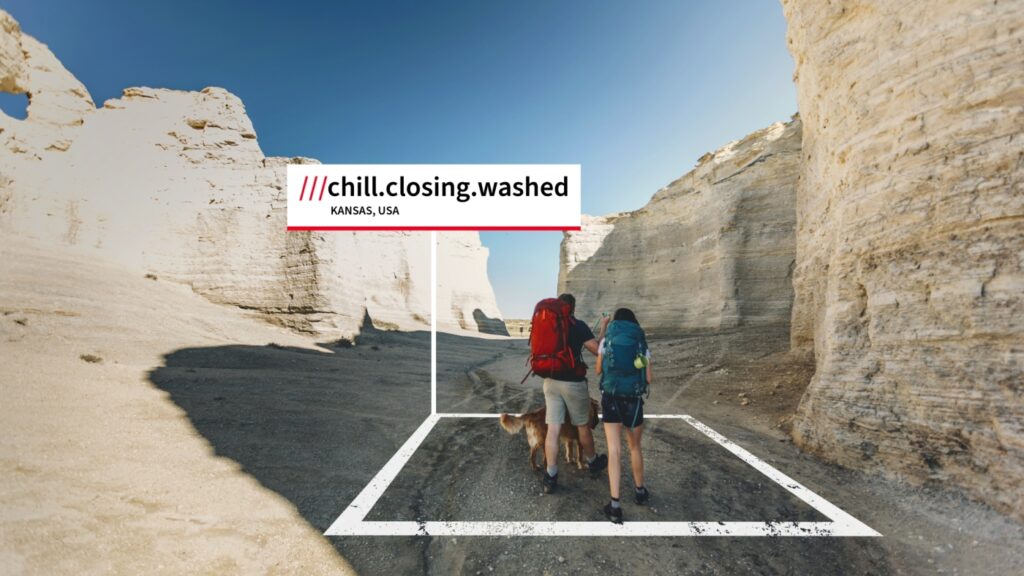
A smartphone app developed in England nine years ago to help roadies deliver band equipment to specific spots has become a vital tool to find lost or injured people in the wilds of Southern California and elsewhere.
The creators of what3words divided the globe into 57 trillion 9-square-meter – or 10 foot by 10 foot – boxes. Clicking on one of those boxes on the app generates a three-word address that is specific to that location and is more accurate than providing a street address or, for lost hikers, a description of “near a big rock.”
The three words shown in the app on a hiker’s phone can be given to rescuers — or are seen on their dispatchers’ computer screens — to navigate the way to the right site.
A square near Big Thunder Mountain Railroad at Disneyland, for example, is spelled.charted.scarves. A square at the entrance to Snow Summit in the Big Bear area is unfocused.surging.giraffe. Swear words, rude words and soundalikes such as hear and here have been removed from the randomly generated phrases.
“It takes the search out of ‘search and rescue’ because we know exactly where they are,” said Los Angeles Fire Department Battalion Chief Tim Wuerfel, whose department adopted the technology in July 2021. “This is pretty much GPS in a much easier language. Instead of trying to read a series of (latitude and longitude) numbers with minutes and seconds, you are able to give three words that never change for that particular piece of dirt or water. It’s pretty amazing.”
64 trillion combinations
what3words was created in 2013, chief marketing officer Giles Rhys Jones said in an interview from the corporate office in London or, to be exact, filled.count.soap.
Chris Sheldrick, who formerly organized music festivals, was one of the founders of the app that has now been downloaded 10 million times in 193 countries.
“Whether he was trying to find Gate 37B or a remote chateau in France, he was constantly frustrated by poor street addressing,” Jones said. “So he started with GPS coordinates. But it became very apparent that roadies and drummers weren’t predisposed to remember 17 numbers. So it was even worse.”
So Sheldrick came up with what3words and its 64 trillion word combinations. The system uses 40,000 words in English and 50 other languages. People began using the app for meetups (see you at Coachella!), to guide taxis and pizza deliveries, find their cars and stage scavenger hunts.
The app has even made its way into popular culture. In an episode of NCIS Los Angeles, a kidnap victim circled three words in a book to lead rescuers to her location. (“There were guns, a tiger and explosions. It was a good episode,” Jones added.)
Jones said he remembers the first time he learned that the app had been used for an emergency after a 12-year-old boy reported to his authorities that his grandmother was ill.
“The whole office went quiet. It was pretty moving,” Jones said.
High-tech accuracy
what3words is now in about 600 public safety dispatch systems in the United States.
LA city fire dispatchers first sent text messages to 911 callers with a link that when clicked, would generate the three-word address. Now dispatchers can click on a map that’s generated by the cellphone call to reveal the what3words address.
“We get a call from somebody in Griffith Park where there is not a traditional address, and they’re trying to describe where they’re parked and where they are on the trail, and we struggled to locate people in the wilderness,” Wuerfel said.
Riverside city firefighters have used what3words to rescue people in remote Sycamore Canyon Park and the thickly brushed Santa Ana River. Each fire engine has a cellphone with the app.
“To be able to leverage the technology is really a game-changer for us,” Capt. Brian Guzzetta said. “It saves us a lot of time from sending multiple units to an area searching for a long time.”
The three-word address automatically shows up on cellphone calls to the Riverside and San Bernardino county sheriff’s departments, although officials there said they don’t recall making any rescues as a result of what3words.
Still, Riverside County dispatch supervisor Timothy Buchfeller said, “I think it’s fantastic. It’s a matter of the public getting on board with it.”
The Orange County Fire Authority uses Rapid SOS, which provides a cellphone caller’s exact location, Capt. Sean Doran said. Using the redundant what3words technology that’s built into Rapid SOS would require adding a second screen for dispatchers, he said, so there are no plans to adopt it.
Los Angeles County sheriff’s Sgt. John Gilbert coordinates Montrose Search and Rescue and said what3words is “pretty darn accurate.”
He encouraged hikers to stay on trails, bring enough food and water, let others know when they plan to return, dress for the weather and carry maps, cellphones and signaling devices.
Jones, the what3words marketing officer, echoed Gilbert’s admonition.
“We are not a replacement for not being prepared,” he said.
